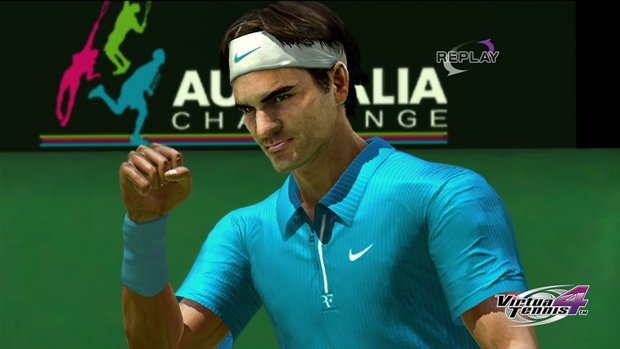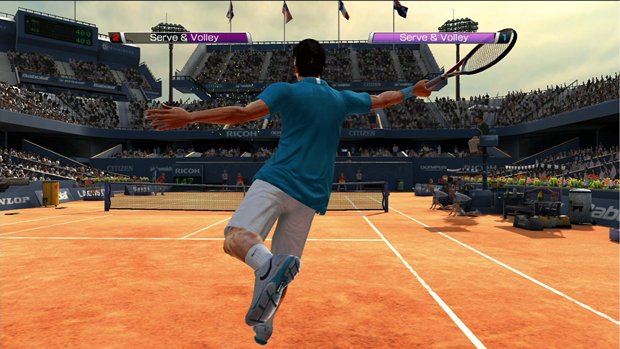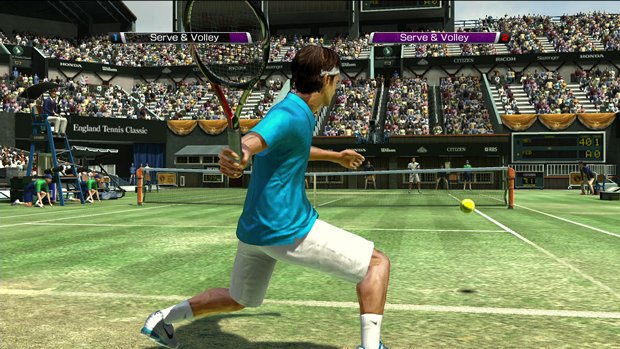Virtua Tennis 4 hands-on preview
Sega's classic mix of arcade and sim tennis is getting a 10th
Though it has long since exited the console race, SEGA's ability to deliver arcade experiences at home is something few developers can match. Since the series' debut, first in arcades and shortly thereafter on the Dreamcast, Virtua Tennis has somehow managed to blend simple arcade-style controls with an undeniable feeling of being a tennis sim. Sure, the home versions are littered with balloon-bouncing minigames and extensive World Tour modes in addition to simple two-player on-court tussles, but the fundamental controls have always mixed pick-up-and-play ease with a surprising amount of depth.

With Virtua Tennis 4, however, series creator (and first female producer at SEGA) Mie Kumagai and the one-time AM-3 team have cobbled together something they're hoping feels truly special for the series' 10th anniversary. Sure, it's got fancy whiz-bang features like 3D and Move support on the PS3 and Kinect support for the 360 (more on all three in a bit), but the core of the game is still that classic mix of simple controls and nuanced depth, now bolstered by a new Match Momentum style of play.
The short version is this: every player in Virtua Tennis 4's still-growing roster of real-life players has their own particular style. Some may rush the net well, some may be more adept at playing defensively, and others may be more all-around players. By actually playing in that style, one can slowly fill the momentum meter, and as it grows, new moves open up. The players literally become more focused, changing animations and becoming more relaxed with their volleys. More interesting, though, is that when the momentum is full, they're able to burn the whole stocked meter for a super-accurate (and extremely easy to hit) super shot.

This is more than just an easy-to-hit, laser-precise shot, however: the super shot can save what would otherwise be a missed ball, so it can be used as something of a last-ditch effort too. Though the Match Momentum meter will fill fairly quickly so long as players are playing in the style of their real-world counterpart, not using it will eventually cause the meter to drain, so SEGA's hoping players will actually stick to the particular style of their chosen pro, but also take advantage of the risk/reward setup to make the most of Match Momentum - yet they can also try to keep other players off their own particular style to keep the momentum in their favor.
It's an interesting setup, but only one part of what's planned for the fourth outing. The familiar World Tour Mode returns, bolstered by a new approach to presenting your created player's journey across the globe and broken into piecemeal locales (everyone starts in Tokyo, though). Given a specific set of days to make your way across a kind of board game-style series of stops, actual movements (and more importantly the number of moves) are dictated by simple tickets. Awarded by your coach or purchased using credits earned after finishing events, these are space-specific options - important because there are actually "bad" locations a player can stop on that can result in everything from injuries to getting, no joke, mugged.

Before any of this can actually happen, though, one has to create a player, and while we were treated to a demo of the usual stuff (hairstyle, facial hair, eyebrows, jaw, nose, chin, eyes, forehead, mouth, and plenty more had multiple sliders for each), there was a more interesting option: that of setting the player's actual disposition and mental quirks. This could lead to matches that actually favor hotheads or help them slip into the zone a little more quickly, though we'll have to spend some time with the character creator before we can say for sure.
As in previous games, a balance has to be struck between the simple yet addictive minigames to help build stats (now it'll also unlock new moves as well) or objective-specific matches with management of fatigue (mitigated by visiting resorts, of course). Simple stats aren't the only thing that must be increased on the way to the area's final objective, however; boosting fame and popularity are equally important, so things like charity events are just as critical as cranking away at the minigames to boost stats.
Weekly digests, tales from the communities you love, and more

Kumagai showed off a pair of those minigames, and announced that all of them would be new to Virtua Tennis 4 (no beach ball battering? Awwwww...). The first was a simple task: pop two balloons on the left and right of the other side of the court. The catch? A series of fans would kick up increasingly violent amounts of wind, changing not only the arc of the ball after a hit, but complicating the volley process of the AI player returning those shots. The second was a simple game of target practice against a series of shooting gallery-style moving plates. Smash enough in a group and they turn red, doling out more points. Successfully smash plates with successive hits and a multiplier is tacked on. Like so many minigames from VTs past, they were simple but effective ways to encounter a handful of different scenarios than the vanilla tennis game.


